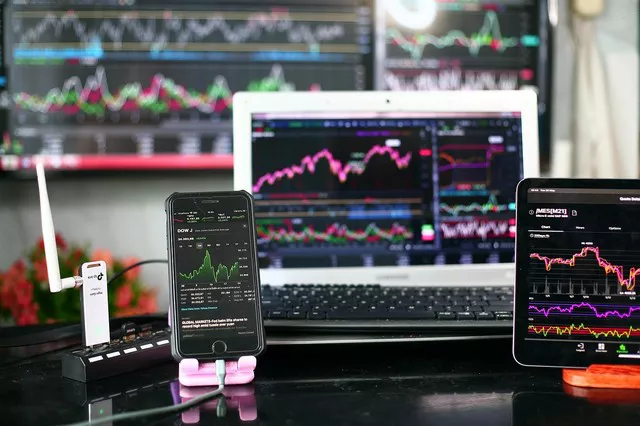Eurodollar futures, a key component of the global interest rate derivatives market, offer investors an avenue to hedge against or speculate on future interest rate movements. As one of the most actively traded futures contracts, Eurodollar futures play a vital role in managing interest rate risk for financial institutions, corporations, and individual traders alike. In this comprehensive guide, we’ll explore where to trade Eurodollar futures, examining the platforms available, essential strategies, and factors to consider when engaging in this dynamic market.
Understanding Eurodollar Futures
Eurodollar futures are financial contracts that derive their value from the interest rate paid on U.S. dollar-denominated deposits held in banks outside of the United States. Despite the name, Eurodollar futures are not directly tied to the euro currency but instead represent expectations about the future direction of U.S. dollar interest rates.
These futures contracts are standardized, exchange-traded instruments with quarterly expiration dates extending up to 10 years into the future. Traded on the Chicago Mercantile Exchange (CME), Eurodollar futures provide a platform for market participants to hedge against or speculate on changes in short-term interest rates.
Where to Trade Eurodollar Futures
Trading Eurodollar futures requires access to a reputable brokerage firm that offers access to the CME Group’s trading platform. Here are some options for trading Eurodollar futures:
1. Online Brokerage Platforms
Many online brokerage firms provide access to futures trading platforms, including Eurodollar futures. These platforms offer intuitive interfaces, real-time market data, and advanced trading tools to execute trades efficiently. Examples of online brokerage platforms that offer Eurodollar futures trading include:
- TD Ameritrade
- Interactive Brokers
- E*TRADE
- Charles Schwab
2. Direct Market Access (DMA) Platforms
Direct Market Access (DMA) platforms provide direct access to futures exchanges, allowing traders to execute trades with minimal latency and maximum control over order execution. These platforms are popular among institutional traders and professional investors seeking high-speed trading capabilities. Examples of DMA platforms that offer Eurodollar futures trading include:
- CME Globex
- Trading Technologies (TT)
- CQG
3. Full-Service Brokerage Firms
Full-service brokerage firms offer personalized trading services, research, and advisory support to clients interested in trading Eurodollar futures. While typically catering to high-net-worth individuals and institutional clients, these firms provide access to experienced brokers who can assist with trade execution and market analysis. Examples of full-service brokerage firms that offer Eurodollar futures trading include:
- Goldman Sachs
- Morgan Stanley
- J.P. Morgan Securities
Strategies for Trading Eurodollar Futures
Trading Eurodollar futures requires a solid understanding of interest rate dynamics, market sentiment, and trading strategies. Here are some common strategies employed by traders in the Eurodollar futures market:
1. Interest Rate Spread Trading
Interest rate spread trading involves taking positions in different Eurodollar futures contracts to capitalize on changes in the yield curve or interest rate differentials. Common spread trading strategies include:
Calendar Spreads: Taking a simultaneous long and short position in Eurodollar futures contracts with different expiration dates to profit from changes in the yield curve.
Intercommodity Spreads: Trading the price differential between Eurodollar futures and other interest rate futures contracts, such as Treasury futures or Fed Funds futures.
2. Yield Curve Strategies
Yield curve strategies involve taking positions based on expectations about future changes in the shape and slope of the yield curve. These strategies aim to profit from shifts in interest rate expectations and yield curve dynamics:
Flattener/Steepener Trades: Taking positions to profit from changes in the slope of the yield curve, such as betting on a flattening or steepening of the curve.
Butterfly Spreads: Constructing positions that profit from specific changes in the shape of the yield curve, typically involving three Eurodollar futures contracts with different expiration dates.
3. Directional Trading
Directional trading strategies involve taking outright long or short positions in Eurodollar futures contracts based on expectations about future interest rate movements. These strategies aim to profit from changes in interest rates:
Rate Hike/Cut Trades: Taking positions based on expectations about future interest rate hikes or cuts by central banks, such as the Federal Reserve.
Trend Following: Following trends in Eurodollar futures prices and taking positions in the direction of the prevailing trend based on technical analysis indicators.
Factors to Consider When Trading Eurodollar Futures
When trading Eurodollar futures, several factors should be taken into account to make informed trading decisions:
1. Interest Rate Outlook: Stay informed about economic indicators, central bank policies, and market expectations regarding future interest rate movements.
2. Market Liquidity: Consider the liquidity of Eurodollar futures contracts, as well as bid-ask spreads and trading volumes, when entering and exiting positions.
3. Margin Requirements: Understand the margin requirements for trading Eurodollar futures, as well as the potential impact of margin calls on trading capital.
4. Market Sentiment: Monitor market sentiment, news events, and geopolitical developments that may impact interest rate expectations and Eurodollar futures prices.
5. Risk Management: Implement risk management techniques, such as stop-loss orders and position sizing, to manage exposure to market volatility and potential losses.
Conclusion
Eurodollar futures trading offers investors a unique opportunity to hedge against or speculate on changes in short-term interest rates, leveraging the depth and liquidity of the global derivatives market. By understanding where to trade Eurodollar futures, employing effective trading strategies, and considering key factors influencing market dynamics, investors can navigate this dynamic market with confidence. Whether executing spread trades based on yield curve dynamics or taking directional positions based on interest rate outlook, Eurodollar futures provide a versatile tool for managing interest rate risk and potentially generating returns in a rapidly evolving financial landscape.


